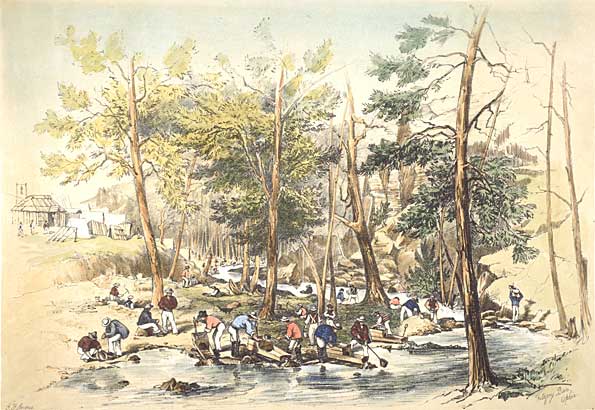 Ophir gold diggings in 1851 - asset 5
Ophir gold diggings in 1851 - asset 5
TLF ID R3565
This is a hand-coloured print of a sketch, entitled 'Fitzroy Bar, Ophir', by George French Angas (1822-86) of the gold fields at Ophir, near Bathurst, New South Wales, in 1851. It shows prospectors cradling for gold along the banks of a stream, which flows swiftly to the rocky Fitzroy Bar, then turns left down between rock-lined banks. Native pines, some of which are dead, line the stream, and a wooden hut and some tents can be seen in the background to the left. The print measures 30.2 cm x 41.0 cm and is Plate 3 in a publication by Angas entitled 'Six views of the gold field of Ophir'.
